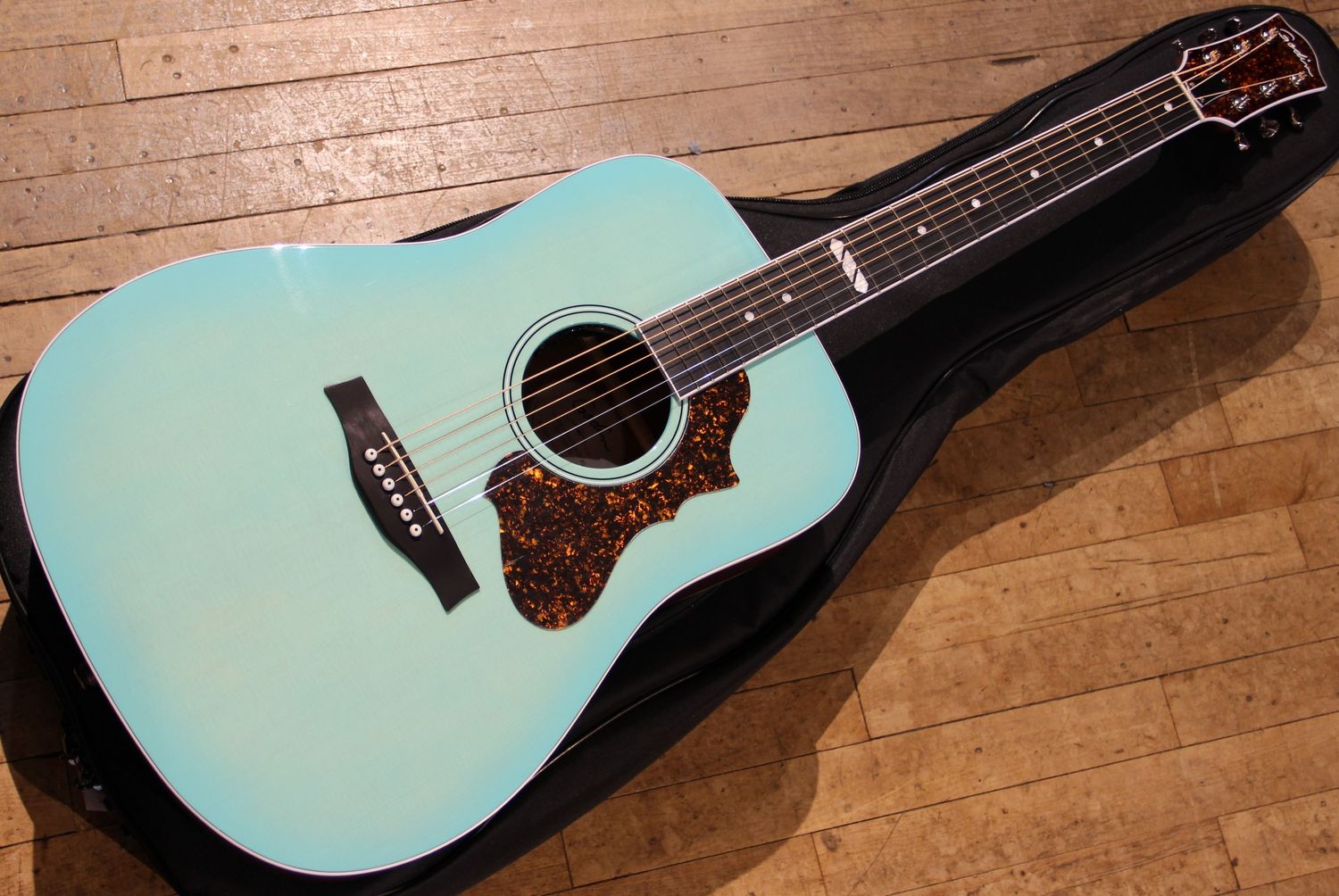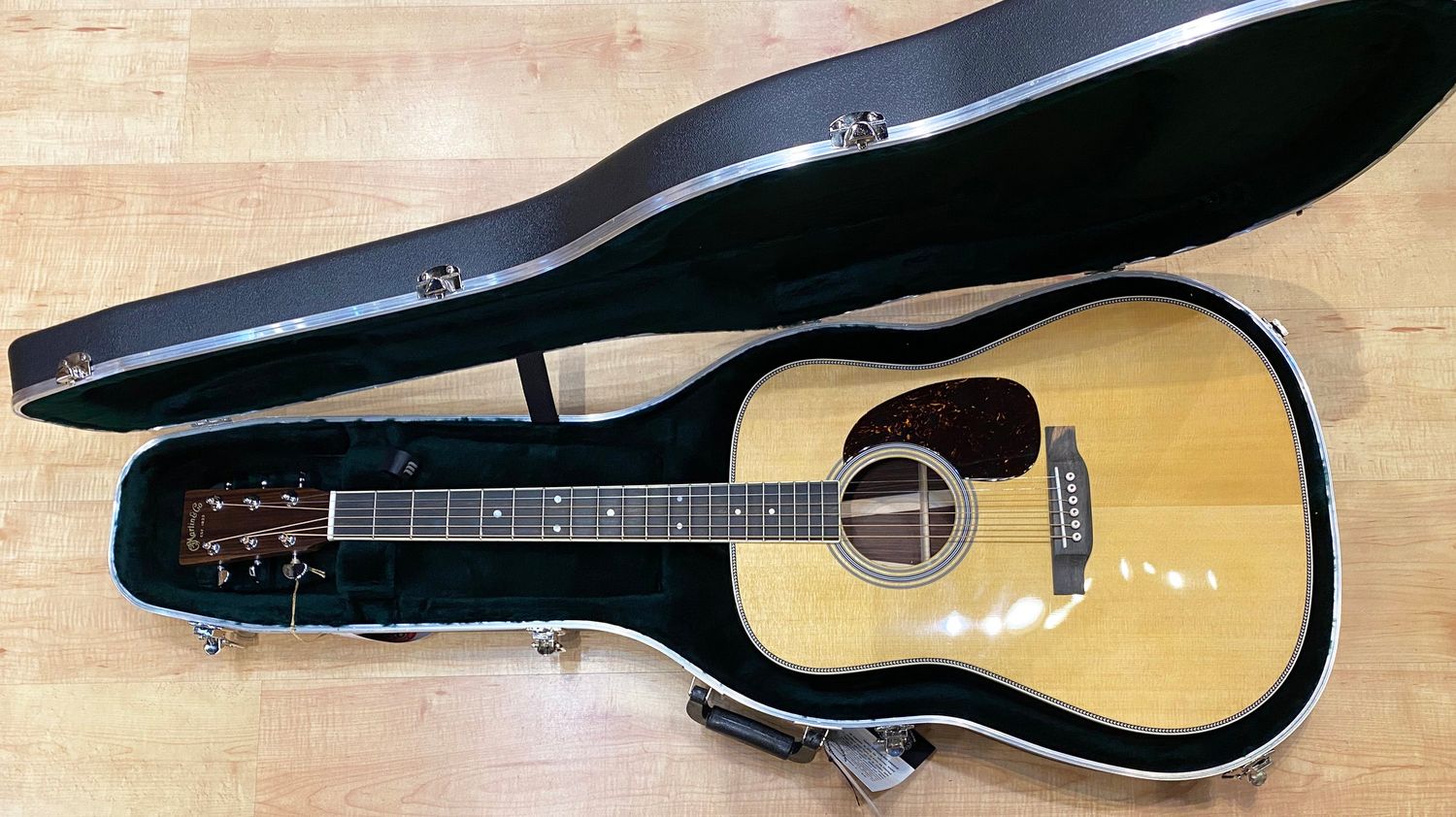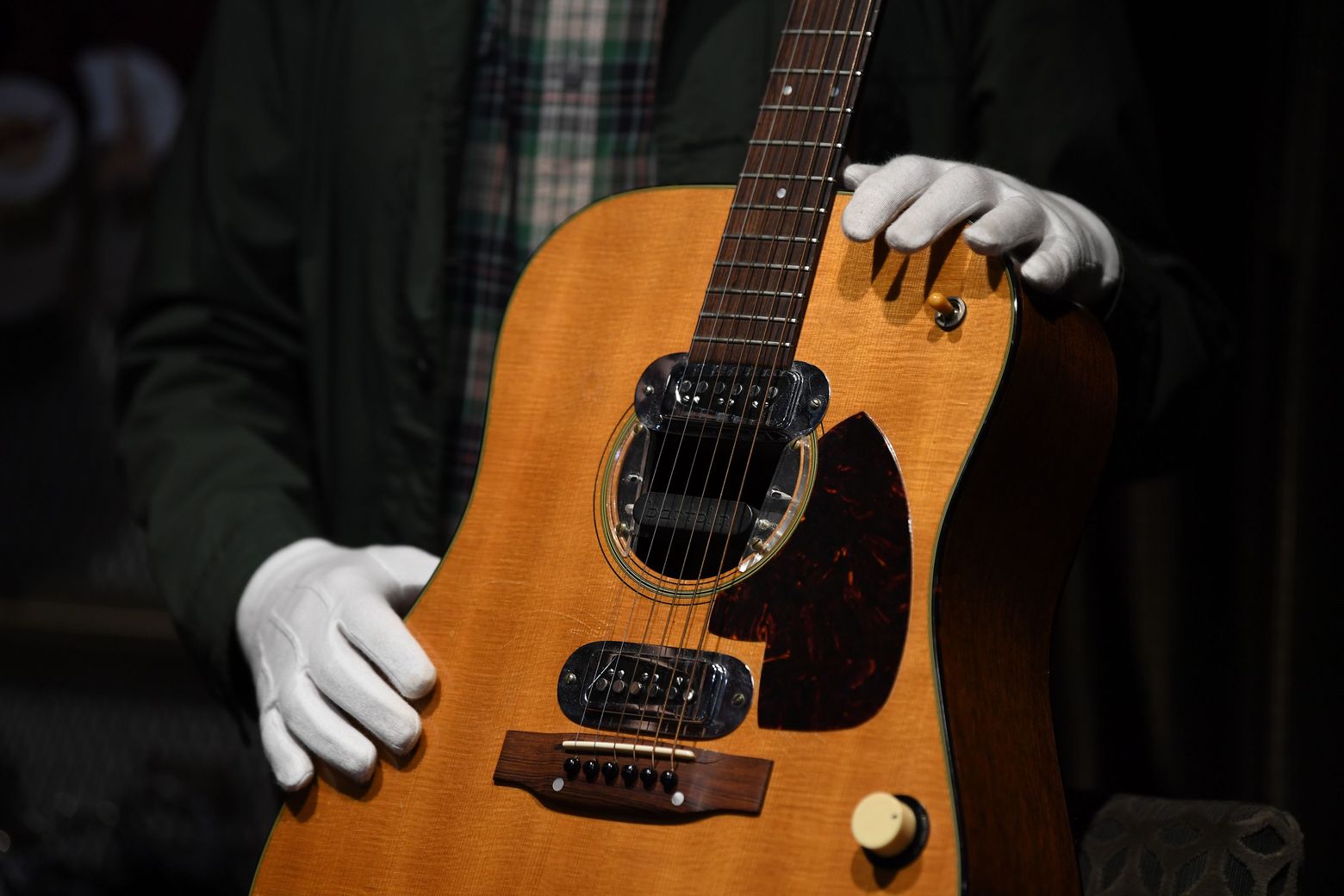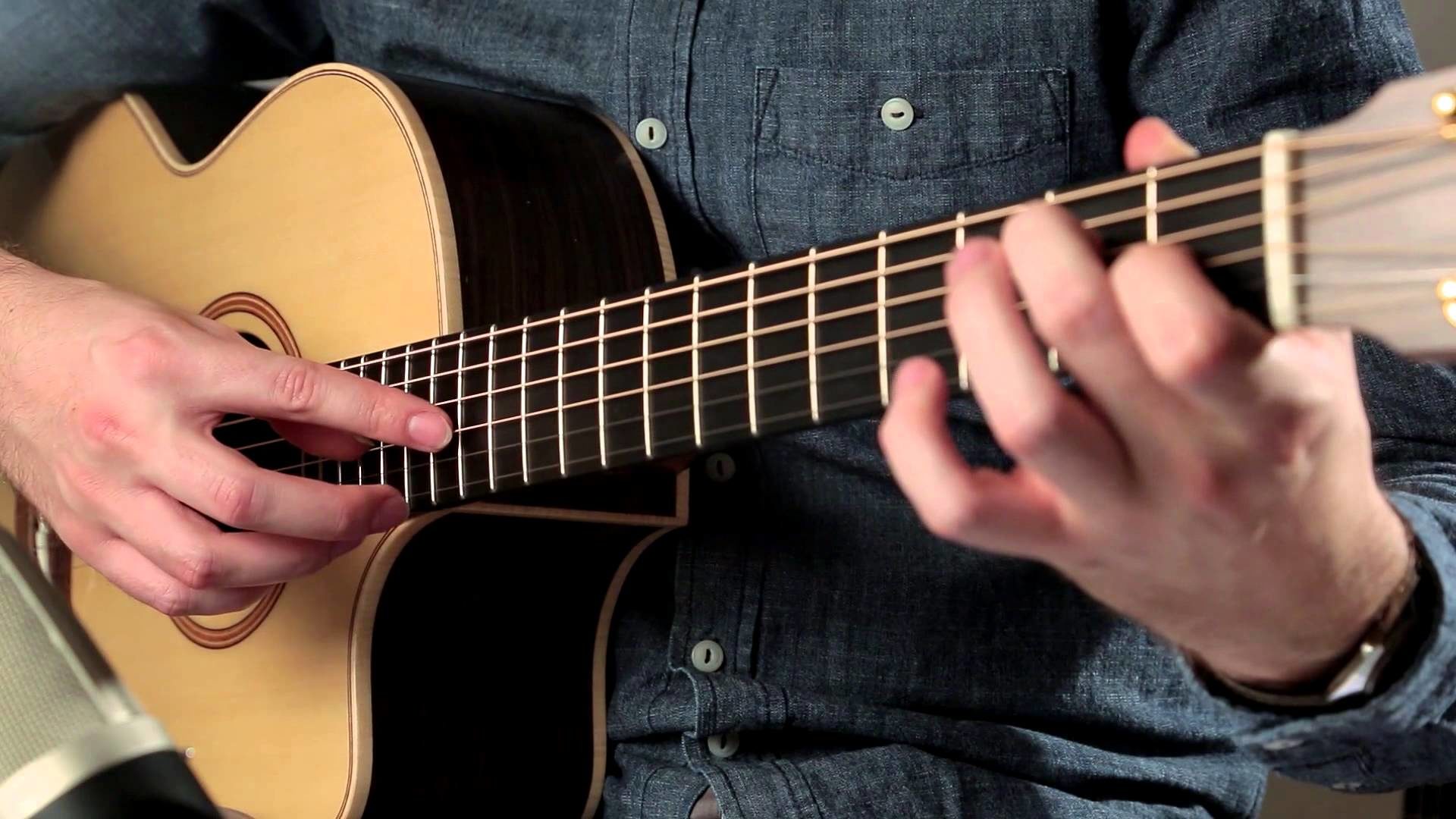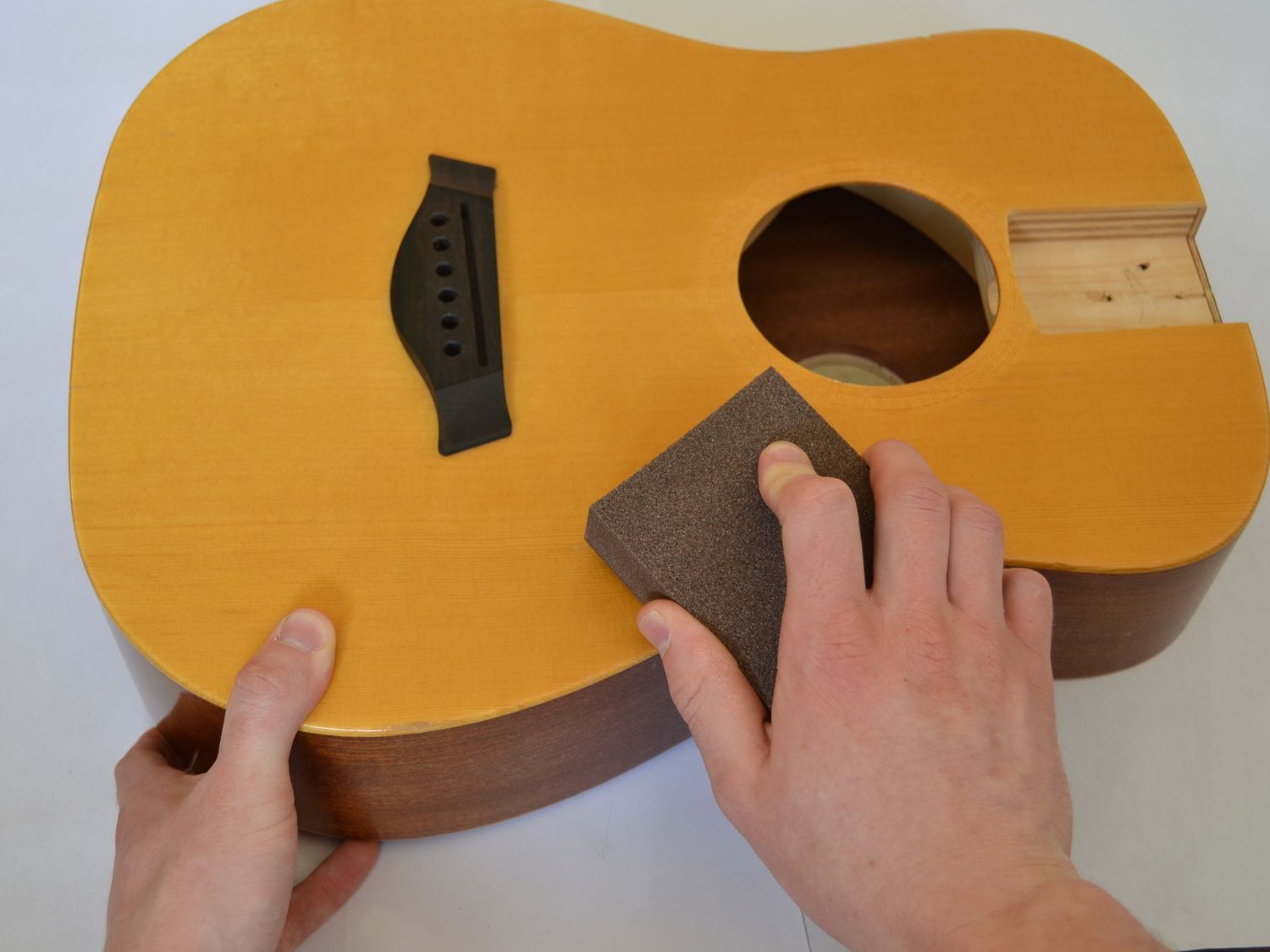Home>Production & Technology>Acoustic>How To Use A Guitar Slide Acoustic


Acoustic
How To Use A Guitar Slide Acoustic
Published: March 13, 2024
Learn how to use a guitar slide on your acoustic guitar with our step-by-step guide. Master the art of slide guitar playing and elevate your acoustic sound.
(Many of the links in this article redirect to a specific reviewed product. Your purchase of these products through affiliate links helps to generate commission for AudioLover.com, at no extra cost. Learn more)
Table of Contents
Introduction
Playing the guitar is a deeply personal and expressive art form. It allows musicians to convey emotions and tell stories through the melodic resonance of strings. While traditional fingerpicking and strumming techniques are widely used, there is another method that adds a unique and soulful dimension to acoustic guitar playing: the guitar slide.
A guitar slide, also known as a bottleneck slide, is a small tube typically made of glass, metal, or ceramic that is worn on the finger. When placed over the guitar strings, it creates a smooth and fluid sound that is distinct from conventional fretting. This technique is often associated with blues and country music, but its versatility makes it a valuable tool for any acoustic guitarist looking to expand their sonic palette.
Using a guitar slide requires a different approach and mindset compared to standard fretting. It demands a delicate touch and a keen ear for intonation, allowing players to explore a wide range of expressive techniques such as sliding, bending, and vibrato. Mastering the art of using a guitar slide can open up a world of sonic possibilities, enabling musicians to evoke raw emotions and convey a sense of longing or nostalgia through their playing.
In this comprehensive guide, we will delve into the intricacies of using a guitar slide with an acoustic instrument. From choosing the right slide to mastering essential techniques, we will explore the nuances of this captivating art form. Whether you are a seasoned guitarist looking to expand your skill set or a beginner eager to explore new sonic territories, this guide will provide valuable insights and practical tips to help you harness the emotive power of the guitar slide. So, grab your slide, tune up your guitar, and let's embark on a journey to unlock the soulful potential of acoustic guitar slide playing.
Choosing the Right Slide
When it comes to using a guitar slide with an acoustic instrument, selecting the right slide is crucial for achieving the desired tone and playability. The choice of material, weight, and size can significantly impact the sound and feel of your playing. Here are some key factors to consider when choosing a guitar slide:
-
Material: Guitar slides are commonly made from glass, metal, or ceramic. Each material offers distinct tonal characteristics and playing experiences. Glass slides are favored for their smooth and warm tone, making them well-suited for soulful blues and melodic passages. Metal slides, on the other hand, produce a brighter and more cutting sound, ideal for rock and slide guitar solos. Ceramic slides strike a balance between glass and metal, offering a versatile tonal range with a smooth feel.
-
Weight and Size: The weight and size of the slide can greatly influence your control and comfort while playing. Heavier slides provide more sustain and a fuller tone, but they may require a stronger grip and more precise control. Lighter slides offer agility and ease of maneuverability, making them suitable for intricate slide techniques and quick transitions between notes. Additionally, the size of the slide should complement the diameter of your finger, ensuring a snug fit for seamless playing.
-
Personal Preference: Ultimately, the choice of a guitar slide is a personal decision based on individual playing style and sonic preferences. Experimenting with different slides allows you to discover which material, weight, and size resonate with your musical expression. Some guitarists even use multiple slides in their arsenal to accommodate various playing scenarios and musical moods.
By carefully considering these factors and experimenting with different options, you can find the perfect guitar slide that complements your acoustic guitar and empowers you to unleash your creativity with expressive slide playing. The right slide will not only enhance your sonic capabilities but also inspire you to explore new musical avenues, infusing your playing with soul-stirring resonance and emotive depth.
Preparing Your Guitar
Before diving into the captivating world of acoustic guitar slide playing, it's essential to prepare your instrument to ensure optimal performance and resonance. Preparing your guitar for slide playing involves a combination of adjustments and techniques that will enhance the overall sound and playability. Here's a detailed look at the steps involved in preparing your guitar for slide playing:
-
Raise the Action: The action of a guitar refers to the height of the strings above the fretboard. For slide playing, a higher action is preferred to prevent the slide from making contact with the frets, which can cause unwanted buzzing and dampen the sustain. Adjusting the action typically involves raising the bridge or saddle to create a more significant gap between the strings and the frets.
-
Use Heavy Gauge Strings: Opt for heavier gauge strings, such as medium or heavy, to achieve a fuller and more resonant tone when using a slide. Heavier strings offer increased tension and stability, allowing for better control and sustain while sliding across the fretboard. Additionally, the added tension helps minimize string buzz and maintains consistent intonation.
-
Experiment with Open Tunings: Open tunings, such as Open D (DADF#AD) or Open G (DGDGBD), are popular choices for slide guitar playing. These tunings involve adjusting the strings to form a chord when strummed open, creating a rich and harmonious sound that complements slide techniques. By experimenting with open tunings, you can unlock a myriad of expressive possibilities and discover unique chord voicings that resonate beautifully with slide playing.
-
Raise the Nut: Similar to raising the bridge, raising the nut of the guitar can further elevate the strings' height, reducing the risk of fret contact during slide playing. This adjustment helps maintain a consistent string height across the fretboard, ensuring smooth and effortless sliding without interference from the frets.
-
Intonation Check: Accurate intonation is crucial for achieving pitch-perfect notes and chords while using a slide. Perform a thorough intonation check by comparing the pitch of fretted notes with their corresponding harmonic overtones at various positions on the fretboard. Make precise adjustments to the saddle positions to achieve optimal intonation, ensuring that your slide playing remains in tune across the entire range of the guitar.
By meticulously preparing your guitar for slide playing through these adjustments and techniques, you can create an instrument that is finely tuned to unleash the expressive potential of acoustic slide guitar. These preparations not only optimize the playability and tonal characteristics of your guitar but also lay the foundation for immersive and soulful slide performances that resonate with emotive depth and sonic richness.
Holding the Slide
When it comes to using a guitar slide with an acoustic instrument, the way you hold the slide plays a pivotal role in shaping your playing technique and the overall sound produced. Properly holding the slide allows for precise control, seamless transitions between notes, and the ability to execute expressive techniques with finesse. Here's a detailed exploration of the essential aspects of holding the slide for acoustic guitar playing:
Finger Placement
The first step in holding the slide involves determining the most comfortable and effective finger placement. Most guitarists opt to wear the slide on the ring finger, as it provides a balance of stability and dexterity. Placing the slide on the ring finger also leaves the index and middle fingers free to mute unwanted string noise and provide additional support when needed. However, some players may prefer using the pinky or middle finger based on personal comfort and playing style. Experimenting with different finger placements allows you to find the most ergonomic and natural position for holding the slide.
Angle and Pressure
Maintaining the correct angle and pressure while using the slide is crucial for achieving optimal tone and intonation. The slide should be positioned parallel to the frets, ensuring that it makes full contact with the strings without tilting or angling excessively. Applying consistent and controlled pressure with the slide against the strings allows for smooth and even transitions between notes, minimizing unwanted string noise and ensuring a clear, resonant sound. It's essential to strike a balance between applying enough pressure to produce a clean tone and avoiding excessive force that may cause the strings to buzz or fret out.
Supporting Fingers
In addition to the finger wearing the slide, the supporting fingers play a vital role in stabilizing the hand and muting unwanted string noise. The index and middle fingers can be used to lightly touch the strings behind the slide, effectively muting them to prevent extraneous vibrations and enhance the clarity of the notes being played. This technique, known as string damping, helps maintain a clean and focused sound, especially when executing slide techniques that involve rapid movements and string crossings.
Fluidity and Control
Achieving a balance of fluidity and control is the hallmark of proficient slide playing. By holding the slide with a relaxed yet purposeful grip, you can facilitate smooth and seamless movements across the fretboard while maintaining precise control over the pitch and dynamics of the notes. Cultivating a sense of fluidity in your slide technique allows for expressive slides, glissandos, and nuanced pitch variations, enabling you to infuse your playing with emotive depth and captivating resonance.
Mastering the art of holding the slide is a foundational aspect of acoustic guitar slide playing. By honing your grip, finger placement, and control, you can unlock the full potential of the slide as a tool for evocative expression and soul-stirring musical storytelling. With a firm yet flexible grasp and a keen awareness of angle and pressure, you can embark on a sonic journey that transcends conventional fretting, embracing the emotive power and boundless creativity of acoustic slide guitar playing.
Technique for Sliding
Mastering the technique of sliding is fundamental to harnessing the emotive power and expressive potential of acoustic guitar slide playing. The art of sliding involves seamlessly transitioning between notes, creating evocative melodies, and infusing your playing with soul-stirring resonance. Here's a comprehensive exploration of the essential elements of sliding technique and the nuanced approach required to elevate your slide playing to new heights.
Finger Placement and String Contact
The foundation of effective sliding technique lies in precise finger placement and maintaining consistent string contact throughout the slide. As you glide the slide along the fretboard, ensure that it remains in full contact with the strings, producing a smooth and continuous sound without interruptions. The slide should be positioned directly above the fretwire, allowing for clear and accurate intonation as you navigate between notes. By anchoring the slide parallel to the frets and maintaining steady pressure, you can achieve seamless transitions and articulate the nuances of each note with clarity and precision.
Controlled Movements and Pitch Variation
Executing controlled movements is essential for articulating expressive slides and glissandos that convey emotion and depth. Begin by practicing slow, deliberate slides, focusing on maintaining a consistent speed and pressure to produce a uniform pitch glide. As you gain proficiency, experiment with varying the speed and length of your slides, exploring the spectrum of pitch variation and dynamic expression. By incorporating subtle vibrato and microtonal inflections into your slides, you can imbue your playing with a captivating sense of intimacy and vulnerability, evoking raw emotions and storytelling through each resonant note.
String Damping and Articulation
String damping and articulation play a crucial role in refining your sliding technique and enhancing the clarity of your playing. Utilize your supporting fingers to lightly touch the strings behind the slide, effectively muting any unwanted string noise and maintaining a focused, articulate sound. This technique allows for precise articulation of individual notes and chords, enabling you to convey intricate melodies and harmonies with exceptional clarity and definition. By mastering the balance between string damping and string contact, you can achieve a seamless blend of fluid slides and articulate phrasing, elevating your slide playing to a level of expressive sophistication.
Dynamic Expression and Emotional Resonance
Ultimately, the technique of sliding transcends mechanical proficiency, inviting musicians to channel their emotions and experiences through the evocative language of the slide. Embrace the subtleties of dynamic expression, allowing your slides to swell with intensity, whisper with vulnerability, and soar with passion. By infusing your playing with a profound sense of emotional resonance, you can captivate listeners and evoke a spectrum of feelings, from longing and introspection to exuberance and triumph. Through the artful mastery of sliding technique, you can craft narratives and paint sonic landscapes that resonate deeply with the human experience, transcending the boundaries of conventional fretted playing and inviting audiences into a world of profound musical storytelling.
Incorporating these nuanced elements of sliding technique into your acoustic guitar playing will empower you to unlock the full expressive potential of the slide, transforming your instrument into a vessel for poignant expression and evocative storytelling. With dedicated practice and a keen ear for tonal nuances, you can embark on a transformative journey of sonic exploration, harnessing the emotive power of sliding technique to craft melodies that linger in the hearts and minds of listeners, leaving an indelible imprint of soul-stirring resonance.
Creating Vibrato
Crafting expressive vibrato is a hallmark of compelling and emotive guitar playing, and when it comes to acoustic slide guitar, the application of vibrato adds a layer of depth and emotional resonance to the notes. Vibrato, characterized by subtle variations in pitch and intensity, infuses the sound with a captivating sense of warmth and vulnerability, allowing musicians to convey a profound range of emotions through their playing.
To create vibrato with a guitar slide on an acoustic instrument, the technique involves delicately modulating the pitch of sustained notes, imparting a sense of organic movement and soulful expression. Here's a detailed exploration of the essential elements of creating vibrato with a guitar slide:
Finger Control and Movement
The foundation of compelling vibrato lies in the finesse and control of finger movement. With the slide positioned over the desired fret, gently oscillate your finger in a subtle back-and-forth motion, imparting a nuanced fluctuation in pitch to the sustained note. The key is to maintain a delicate touch, allowing the vibrato to ebb and flow with a natural, organic quality that resonates with emotional depth.
Rhythmic Sensitivity
Incorporating a sense of rhythmic sensitivity into your vibrato technique can elevate the expressive impact of your playing. Experiment with varying the speed and intensity of the vibrato, aligning it with the underlying rhythm of the music. By synchronizing the vibrato with the rhythmic pulse, you can infuse the notes with a compelling sense of dynamic movement, creating an immersive and evocative sonic experience.
Intuitive Pitch Variation
As you apply vibrato to sustained notes, explore intuitive pitch variation to imbue the sound with a rich and nuanced character. Embrace the subtleties of microtonal inflections, allowing the pitch to gently fluctuate above and below the central note, creating a sense of expressive vulnerability and raw emotion. By intuitively navigating the pitch range, you can evoke a profound sense of intimacy and introspection, inviting listeners into a world of poignant musical storytelling.
Seamless Integration with Slides
Integrating vibrato seamlessly with sliding techniques can further enhance the emotive impact of acoustic slide guitar playing. Experiment with incorporating vibrato at the culmination of a slide, allowing the sustained note to bloom with expressive intensity and vulnerability. By seamlessly transitioning from a fluid slide into a delicate vibrato, you can craft a seamless narrative arc within your playing, captivating listeners with a sense of poignant storytelling and sonic depth.
By honing the art of creating vibrato with a guitar slide on an acoustic instrument, you can unlock a world of emotive possibilities, infusing your playing with a profound sense of vulnerability, intimacy, and expressive depth. Through dedicated practice and a keen ear for tonal nuances, you can harness the evocative power of vibrato to craft melodies that resonate with the human experience, leaving an indelible imprint of soul-stirring resonance.
Tips for Practice
Mastering the art of acoustic guitar slide playing requires dedicated practice and a deliberate approach to honing your technique and musical expression. Here are essential tips to guide your practice sessions and elevate your proficiency in using a guitar slide with an acoustic instrument:
-
Focused Technique Development: Dedicate focused practice sessions to develop fundamental slide techniques, such as precise sliding, controlled vibrato, and seamless string damping. By isolating specific aspects of slide playing and refining them systematically, you can build a strong foundation for expressive and nuanced performance.
-
Slow and Steady Progression: Embrace a deliberate and gradual approach to skill development. Begin by practicing at a slow tempo, allowing yourself to concentrate on precision and control. As your proficiency grows, gradually increase the tempo while maintaining clarity and articulation in your slide playing.
-
Ear Training and Intonation: Cultivate a keen ear for pitch and intonation by regularly practicing scales, melodies, and licks with the slide. Focus on achieving accurate pitch placement and seamless transitions between notes, refining your ability to expressively articulate musical phrases with the slide.
-
Exploration of Open Tunings: Experiment with various open tunings to expand your sonic palette and discover unique harmonic possibilities. Open tunings offer a rich foundation for slide playing, allowing you to explore resonant chord voicings and melodic textures that complement the expressive nature of the slide.
-
Creative Expression and Improvisation: Engage in creative exploration and improvisation with the slide, allowing yourself the freedom to express emotions and musical ideas through spontaneous playing. Embrace the organic flow of improvisation to nurture your artistic intuition and develop a personal voice in slide guitar expression.
-
Repetition and Muscle Memory: Emphasize repetitive practice to develop muscle memory and dexterity in slide playing. Consistent repetition of slide techniques and musical passages reinforces muscle memory, leading to increased fluency and precision in executing slides, vibrato, and string articulation.
-
Listening and Emulation: Immerse yourself in the music of renowned slide guitarists across various genres, actively listening to their phrasing, dynamics, and emotive expression. Emulating the playing styles of influential slide guitarists can provide valuable insights and inspire your own artistic growth in acoustic slide guitar playing.
-
Recording and Self-Evaluation: Utilize recording technology to capture your practice sessions and performances. Regularly review and evaluate your recordings, identifying areas for improvement and celebrating progress. Self-evaluation fosters a reflective approach to practice, leading to continuous refinement and growth as a slide guitarist.
By integrating these tips into your practice regimen, you can embark on a transformative journey of skill development and artistic exploration in acoustic guitar slide playing. With patience, dedication, and a spirit of creative curiosity, you can unlock the full potential of the guitar slide as a vehicle for emotive storytelling and soul-stirring musical expression.
Conclusion
In conclusion, the art of using a guitar slide with an acoustic instrument is a captivating journey that transcends conventional fretted playing, inviting musicians to explore the boundless realms of emotive expression and sonic storytelling. From the selection of the perfect slide to the mastery of nuanced techniques, acoustic guitar slide playing offers a rich tapestry of creative possibilities that resonate with soul-stirring resonance and evocative depth.
As we have delved into the intricacies of using a guitar slide, it becomes evident that the choice of slide material, weight, and size significantly influences the tonal characteristics and playability. By carefully considering these factors and experimenting with different slides, musicians can discover the ideal companion for their acoustic guitar, empowering them to convey raw emotions and evoke nostalgic narratives through their playing.
Furthermore, the preparation of the guitar for slide playing, including adjustments to the action, string gauge, and open tunings, lays the foundation for an instrument finely tuned to unleash the expressive potential of acoustic slide guitar. These preparations not only optimize the playability and tonal characteristics of the guitar but also inspire immersive and soulful slide performances that resonate with emotive depth and sonic richness.
The nuances of holding the slide, executing sliding techniques, and crafting expressive vibrato underscore the artful mastery required to harness the emotive power of the slide. By honing grip, finger placement, and control, musicians can unlock the full potential of the slide as a tool for evocative expression and soul-stirring musical storytelling, transcending the boundaries of conventional fretted playing.
Moreover, the tips for practice serve as a guiding compass for aspiring slide guitarists, offering essential insights into focused technique development, gradual progression, ear training, creative expression, and self-evaluation. Through dedicated practice and a deliberate approach to honing technique and musical expression, musicians can embark on a transformative journey of skill development and artistic exploration in acoustic guitar slide playing.
In essence, the art of using a guitar slide with an acoustic instrument is a testament to the profound connection between music and human emotion. It invites musicians to channel their innermost feelings and experiences through the evocative language of the slide, crafting melodies that linger in the hearts and minds of listeners, leaving an indelible imprint of soul-stirring resonance. As musicians continue to explore the captivating possibilities of acoustic slide guitar playing, they embark on a sonic odyssey that transcends technical proficiency, embracing the profound art of emotive storytelling through the timeless resonance of the guitar slide.


